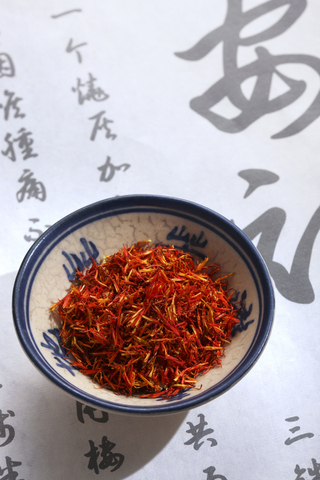There is some preliminary data that suggests that you can help to prevent osteoporosis with safflower tea.
Osteoporosis results from bone loss and can develop into a serious medical condition that affects millions of people each year. The most common form of osteoporosis occurs in women after menopause and is believed to be the results of several factors, such as lower estrogen levels, inadequate weight-bearing exercise and low levels of vitamin D and calcium. Other conditions can also cause osteoporosis also and, as the population of the U.S. ages, this disease will increase.
Everything that you can do now in order to prevent osteoporosis will help you in the years to come. Here is one simple, pleasurable idea – safflower tea – especially for postmenopausal women. For years, safflowers have been used in cosmetics, cooking oil and dyes, as well as a tea. The tea is made from the petals of the flower.
A recent study of 40 postmenopausal women ages 49 to 64-years was conducted at the Catholic University in Korea. Participants were randomly assigned to either a safflower tea supplement (Saf-tea) group (n = 27) or a placebo group (n = 13). After 6 months, significant increases in plasma genistein and enterolactone were observed in the Saf-tea group. Bone mineral density decreased significantly in the placebo group (P < 0.01) but not in the supplemented group. It was concluded the Saf-tea had both antioxidant and potential bone protecting effects in postmenopausal women without liver toxicity.
The best treatment of osteoporosis is prevention. We know that weight-bearing exercise, good nutrition, stress reduction and vitamin D are necessary. The results from this study suggest that good nutrition may include a daily cup of safflower tea.
Source: Sung-Hee Cho et al “Effects of a safflower tea supplement on antioxidative status and bone markers in postmenopausal women”. Department of Food Science and Nutrition, Catholic University of Daegu, Geumnak-ro, Hayang-eup, Gyeongsan-si, Gyeongbuk 712-702, Korea. Nutr Res Pract. 2011 February; 5(1): 20–27. Published online 2011 February 28. doi: 10.4162/nrp.2011.5.1.20.


